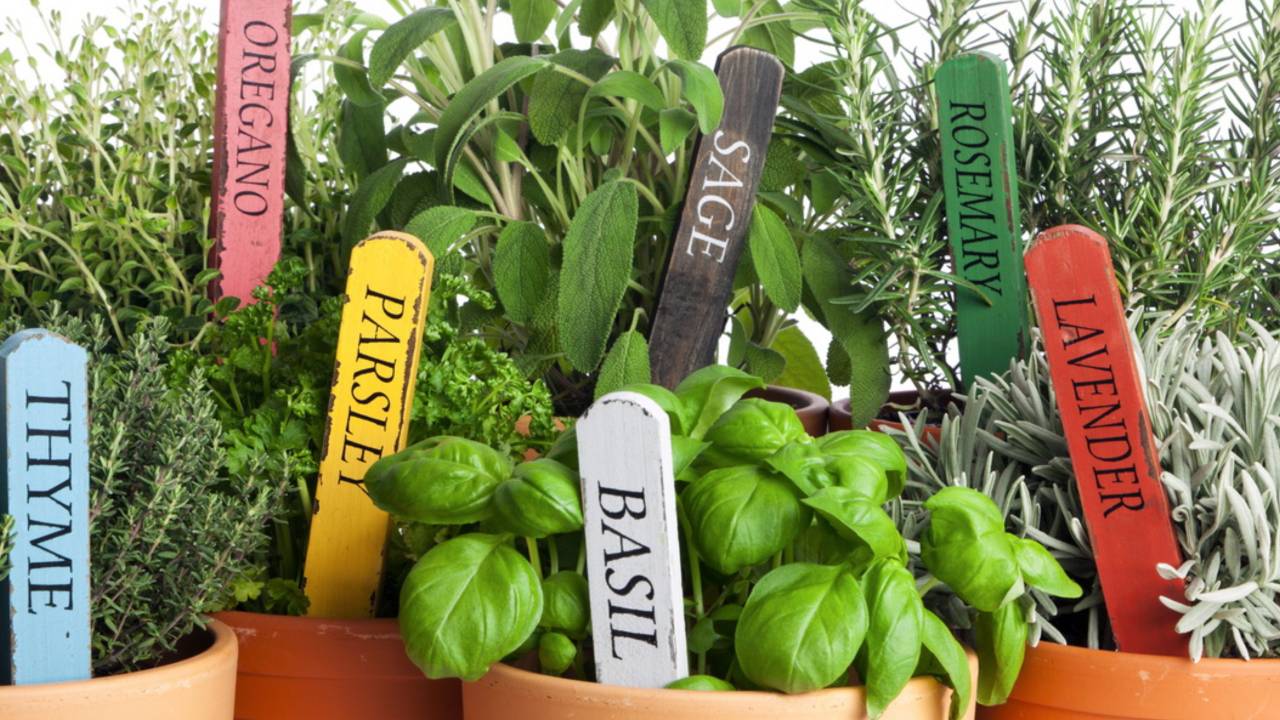List Of Medicinal Plants That Can Be Grown At Home
Having medicinal crops available is invaluable, however cultivating them your self gives unparalleled advantages. Even with restricted area, you’ll be able to cultivate a thriving herb backyard. Think about the satisfaction of nurturing crops that promote well-being with out the added value!
An unlimited array of medicinal herbs may be grown at residence. Some are versatile, serving as each culinary delights and therapeutic brokers, whereas others excel in particular therapeutic functions. From soothing teas to potent tinctures, the probabilities are countless.
Traditionally, cultures worldwide have treasured their native medicinal crops. These botanical allies have handled frequent illnesses from digestive upsets and respiratory points to insomnia and coronary heart palpitations. Remarkably, sure herbs have gained world recognition for his or her therapeutic properties. As soon as ubiquitous in gardens and kitchens, they had been revered for his or her means to revive well being and stability.
Record Of Medicinal Crops That Can Be Grown At House Close to
Usually all these crops don’t want particular care, however they can provide you a lot advantages. Listed below are some examples of medicinal crops and herbs that medicinal crops that may be grown at residence in India and world wide. Listed below are 22 medicinal crops you could begin rising at residence:
- Garlic
- Wormwood
- Basil
- Aloe Vera
- Celery
- Arnica
- Burdock
- Dandelion
- Good grass
- Fennel
- Jasmine
- Lavender
- Manzanilla
- Lemon Balm
- Mint
- Oregano
- Stinging nettle
- Parsley
- Romero
- Salvia
- Thyme
- Carrots
1. Garlic (Allium sativum)
Garlic is a broadly used herb identified for its culinary and medicinal properties. It has been used for hundreds of years for its well being advantages, together with its potential to enhance coronary heart well being and enhance immunity.
- How it’s planted: Garlic is usually planted from cloves fairly than seeds. The cloves are planted in well-drained soil with full daylight. They need to be spaced about 4–6 inches aside and planted 2 inches deep. Garlic requires common watering however shouldn’t be waterlogged.
- Properties: Garlic has antibacterial, antiviral, and antifungal properties. It’s identified to assist cardiovascular well being, enhance the immune system, and have anti-inflammatory results.
2. Wormwood (Artemisia absinthium)
Wormwood is a bitter herb traditionally utilized in medication and within the manufacturing of absinthe. It has an extended historical past in conventional medication for its digestive and antiparasitic properties.
- How it’s planted: Wormwood is grown from seeds or seedlings. It thrives in well-drained soil with full solar. The plant is hardy and requires minimal watering as soon as established.
- Properties: Wormwood is understood for its bitter style, which stimulates digestion. It has antimicrobial, anti-inflammatory, and antiparasitic properties and is utilized in varied conventional cures.
3. Tulsi (Ocimum basilicum)
Tulsi is a well-liked herb in culinary traditions worldwide, particularly in Italian and Thai delicacies. It’s valued for its fragrant leaves and medicinal properties.
- How it’s planted: Tulsi is often grown from seeds. It prefers well-drained soil and full daylight. Basil must be planted after the final frost and spaced about 6–12 inches aside.
- Properties: Tulsi has anti-inflammatory, antibacterial, and antioxidant properties. It helps digestion, reduces stress, and may help handle signs of respiratory infections.
4. Aloe Vera (Aloe barbadensis miller)
Aloe Vera is famend for its soothing gel utilized in skincare and medicinal functions. It’s a succulent plant with thick, fleshy leaves.
- How it’s planted: Aloe Vera is usually grown from offsets or pups. It requires well-drained soil and vibrant, oblique daylight. Watering must be rare, permitting the soil to dry out between waterings.
- Properties: Aloe Vera gel is understood for its soothing, moisturizing, and therapeutic properties. It’s generally used to deal with burns, and pores and skin irritations, and promote wound therapeutic.
5. Celery (Apium graveolens)
Celery is a well-liked vegetable identified for its crisp texture and gentle taste. It’s additionally used for its potential well being advantages.
- How it’s planted: Celery may be grown from seeds or transplants. It requires wealthy, well-drained soil and ample water. Celery is a cool-weather crop and desires common watering.
- Properties: Celery is wealthy in nutritional vitamins and minerals, together with vitamin Okay and potassium. It has anti-inflammatory properties and helps digestive well being.
6. Arnica (Arnica montana)
Arnica is a herb utilized in conventional medication for its anti-inflammatory and pain-relieving properties. It’s generally utilized topically to bruises and strains.
- How it’s planted: Arnica is grown from seeds or crops in well-drained soil with full solar to partial shade. It prefers cooler climates and desires common watering.
- Properties: Arnica has anti-inflammatory and analgesic properties. It’s used to deal with bruises, muscle soreness, and joint ache when utilized topically.
7. Burdock (Arctium lappa)
Burdock is a root vegetable and herb utilized in conventional medication for its detoxifying properties. It has been utilized in Asian delicacies and natural cures.
- How it’s planted: Burdock is grown from seeds in well-drained soil with full solar or partial shade. It requires constant moisture and area for its giant roots.
- Properties: Burdock has detoxifying, diuretic, and anti inflammatory properties. It helps liver perform, promotes digestion, and helps in pores and skin well being.
8. Dandelion (Taraxacum officinale)
Dandelion is a typical herb identified for its vibrant yellow flowers and broad leaves. It’s utilized in conventional medication for its varied well being advantages.
- How it’s planted: Dandelion may be grown from seeds in well-drained soil and full solar. It’s hardy and may thrive in varied situations, making it simple to domesticate.
- Properties: Dandelion has diuretic, anti-inflammatory, and antioxidant properties. It helps liver well being, aids digestion, and helps with detoxing.
9. Good Grass (Eleusine indica)
Good Grass, often known as Indian Goosegrass or Wiregrass, is a typical herb with varied conventional makes use of.
- How it’s planted: It’s usually grown in well-drained soil with full solar. Good Grass is usually thought-about a weed however may be cultivated for its medicinal properties.
- Properties: It has anti-inflammatory and diuretic properties. It’s utilized in conventional medication for its potential advantages in treating urinary tract infections and different illnesses.
10. Fennel
Fennel, generally known as Saunf in Hindi, is a herb with fragrant seeds and feathery leaves. It’s used each as a spice and in conventional medication.
- How it’s planted: Fennel is grown from seeds in well-drained soil with full solar. It requires common watering and may develop fairly tall.
- Properties: Fennel has digestive, anti-inflammatory, and antioxidant properties. It helps digestive well being, relieves bloating, and will assist with respiratory points.
11. Jasmine (Jasminum spp.)
Jasmine is a aromatic flowering plant typically utilized in perfumes and conventional medication. Its flowers are identified for his or her soothing aroma.
- How it’s planted: Jasmine is grown from cuttings or seeds in well-drained soil with full solar. It requires common watering and may be skilled to climb or unfold as a floor cowl.
- Properties: Jasmine has calming and anti-anxiety properties. It’s typically utilized in aromatherapy to scale back stress and improve temper.
12. Lavender (Lavandula spp.)
Lavender is a well-liked herb identified for its calming scent and exquisite purple flowers. It’s utilized in each culinary and medicinal functions.
- How it’s planted: Lavender is grown from seeds or transplants in well-drained soil with full solar. It’s drought-tolerant and requires minimal watering.
- Properties: Lavender has stress-free, anti-anxiety, and antiseptic properties. It’s generally utilized in aromatherapy, skincare, and to help sleep.
13. Chamomile
Chamomile is a widely known herb used for its calming results and digestive advantages.
- How it’s planted: Chamomile is grown from seeds in well-drained soil with full solar. It’s a hardy plant that requires common watering.
- Properties: Chamomile has soothing, anti-inflammatory, and digestive properties. It’s generally used as a tea to advertise leisure and relieve digestive points.
14. Lemon Balm
Lemon Balm, generally known as Melisa, is a aromatic herb used for its calming results and nice lemon scent.
- How it’s planted: Lemon Balm is grown from seeds or transplants in well-drained soil with a fan of full solar. It wants common watering however shouldn’t be waterlogged.
- Properties: Lemon Balm has calming, antiviral, and digestive properties. It’s used to alleviate stress, nervousness, and digestive discomfort.
15. Mint (Mentha spp.)
Mint is a flexible herb identified for its refreshing taste and aroma. It’s utilized in cooking, drinks, and conventional medication.
- How it’s planted: Mint is grown from seeds or cuttings in well-drained soil with partial shade to full solar. It’s invasive, so it’s typically grown in containers.
- Properties: Mint has soothing, digestive, and antimicrobial properties. It’s generally used to alleviate digestive points, nausea, and complications.
16. Oregano (Origanum vulgare)
Oregano is a well-liked culinary herb identified for its strong taste and medicinal properties. It’s utilized in many dishes and conventional cures.
- How it’s planted: Oregano is grown from seeds or transplants in well-drained soil with full solar. It requires minimal watering as soon as established.
- Properties: Oregano has antimicrobial, anti-inflammatory, and antioxidant properties. It helps immune well being and is usually utilized in treating respiratory and digestive points.
17. Stinging Nettle (Urtica dioica)
Stinging Nettle is a herb identified for its stinging hairs and numerous medicinal makes use of. It has been used historically for its dietary and well being advantages.
- How it’s planted: Stinging Nettle is grown from seeds or transplants in well-drained soil with a fan of full shade. It requires common watering.
- Properties: Nettle has anti-inflammatory, diuretic, and antihistamine properties. It’s used to deal with allergic reactions, and arthritis, and assist urinary well being.
18. Parsley (Petroselinum crispum)
Parsley is a typical herb used each as a garnish and for its dietary advantages. It’s wealthy in nutritional vitamins and minerals.
- How it’s planted: Parsley is grown from seeds in well-drained soil with full solar or partial shade. It wants common watering and may take a number of weeks to germinate.
- Properties: Parsley has antioxidant, diuretic, and digestive properties. It helps general well being, aids digestion, and has anti-inflammatory results.
19. Rosemary (Rosmarinus officinalis)
Rosemary is an fragrant herb utilized in cooking and for its medicinal properties. It’s identified for its pine-like perfume.
- How it’s planted: Rosemary is grown from seeds or cuttings in well-drained soil with full solar. It’s drought-tolerant and requires minimal watering.
- Properties: Rosemary has antioxidant, anti-inflammatory, and memory-enhancing properties. It helps cognitive perform, aids digestion, and has antimicrobial results.
20. Sage (Salvia officinalis)
Sage is a herb with a robust taste and aroma, utilized in cooking and conventional medication. It has been valued for its well being advantages for hundreds of years.
- How it’s planted: Sage is grown from seeds or transplants in well-drained soil with full solar. It’s drought-tolerant and desires common watering.
- Properties: Sage has antimicrobial, anti-inflammatory, and antioxidant properties. It helps digestive well being, and cognitive perform, and may help with sore throats.
21. Thyme (Thymus vulgaris)
Thyme is a flexible herb utilized in cooking and for its medicinal properties. It has a robust taste and is understood for its potential well being advantages.
- How it’s planted: Thyme is grown from seeds or transplants in well-drained soil with full solar. It requires minimal watering and may thrive in poor soil situations.
- Properties: Thyme has antimicrobial, anti-inflammatory, and antioxidant properties. It helps respiratory well being, aids digestion, and has expectorant results.
22. Carrots (Daucus carota)
Carrots are a root vegetable identified for his or her dietary worth and flexibility in cooking. They’re wealthy in nutritional vitamins, notably Vitamin A.
- How it’s planted: Carrots are grown from seeds in well-drained soil with full solar. They want constant moisture and area to develop their lengthy roots.
- Properties: Carrots are wealthy in beta-carotene, which helps eye well being and immune perform. In addition they have antioxidant and anti inflammatory properties.
Incorporating these herbs and crops into your weight-reduction plan and wellness routine can provide a variety of advantages, from culinary delights to medicinal assist, every contributing to general well being and vitality in its distinctive method.


























